#tomb of menna
Text

The Hunter's Daughter (c. 1422–1411 BC)
via the Ancient Egyptian collection
Tomb of Menna (1422–1390 BC)
wall and panel painting
#ancient egyptian art#ancient egypt#new kingdom#new kingtom style#tomb of menna#tomb of menna seris#**a#**
186 notes
·
View notes
Text
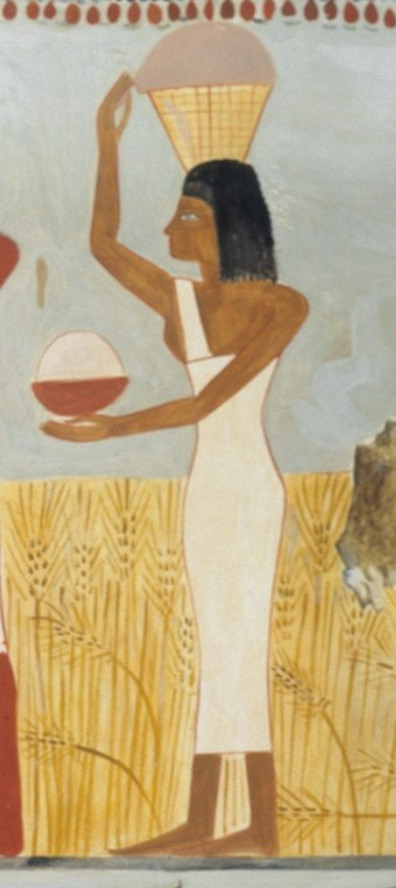
Harvest Scenes, Tomb of Menna - Met Museum Collection
Note: This is a modern copy of an original
Inventory Number: 30.4.44
Original Dating: New Kingdom, Dynasty 18, original ca. 1400–1352 B.C.
Location Information: From Egypt, Upper Egypt, Thebes
#Harvest Scenes#Tomb of Menna#new kingdom#new kingdom pr#dynasty 18#upper egypt#thebes#met museum#30.4.44#womens clothing#NKPRWC
0 notes
Text

Tomb of Menna (TT69), c. 1400–1352 B.C.
Sheikh Abd el-Qurna, Theban Necropolis.
1 note
·
View note
Text


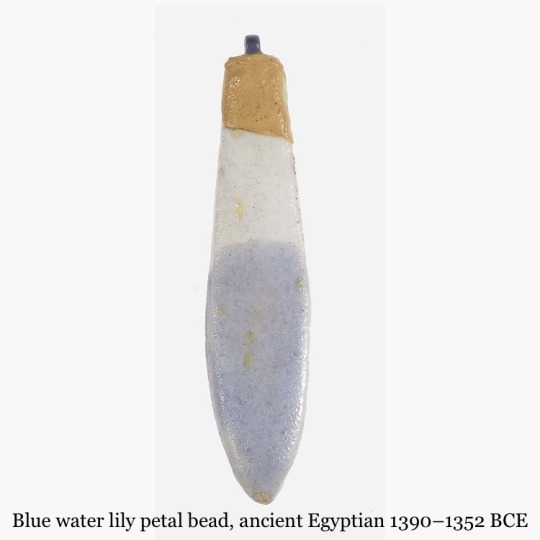
Ancient Egyptian mural detail from the Tomb of Menna, circa 1400-1352 BCE. A woman is holding water lily flowers, wearing a collar necklace of water lily petal beads (like the ones shown below) and a headdress of water lily petals with a water lily flower at her forehead with a mandrake fruit in its centre. On top of her head is a perfumed ointment cone likely scented with water lily.
The ancient Egyptians associated water lilies with purification, dawn, the underworld, and resurrection. They used water lilies for food, medicine, perfume, intoxication, pleasure, ritual, and spiritual purification. They used two water lilies: the day blooming “blue lotus” (Nymphaea nouchali var. caerulea) and the night blooming “white lotus” (Nymphaea lotus). Nefertem, the water lily god, was deity of the dawn of the universe and of each new day. Water lilies are featured in the famous Book of the Dead and the flowers, buds, and petals were used as funerary garlands to adorn the dead.
#bane folk#blue lotus#water lily#ancient egypt#nymphaea caerulea#nymphaea nouchali var caerulea#nymphaea lotus#water lilies#ethnobotany
35 notes
·
View notes
Text
Stern-mounted steering oar of an Egyptian riverboat
Tomb of Menna, scribe of the king, scene: funeral procession to Abydos, this or another funerary boat carried the body of Menna and his wife to Abydos, the place consecrated to the god Osiris.

View On WordPress
0 notes
Text
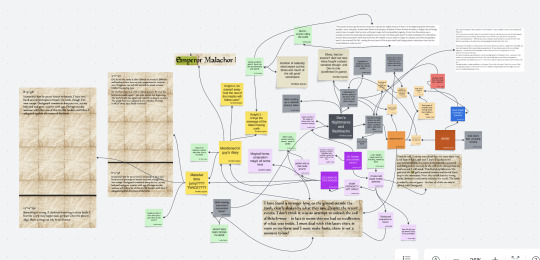
So Dev's D&D campaign is going well(?). We have a conspiracy board now at least.
There's bits of context under the cut, at least that what I can provide for now.
The Web (:
Shiv: One of the four party members, a human rogue/grave robber. They joined the campaign after failing to break into a tomb in the mountains, brought to the group by an old man with horse and magic sword. They have no memory of what was inside the tomb.
Zird (spelling varies): Goblin artificer, looking to find magical items and create his own.
Menna Alloy: Our human fighter, not mentioned on here yet. The most functional member of the group.
Old Man: Author of the diary entries on a parchment texture. Gave the party a magic sword that may have used to belong to a saint. He's dead now (killed by the Black Knight mentioned on the other side of the web), but we have his horse still, and it may be magical. The guy might have been immortal?
Jester: Evil necromancer raising an army from the dead. Stole some of Dev's hair at one point. OOC, I think we're being scried on. The Black Knight seems to serve him.
Seleck-Mor (spelling varies): God of undeath, among other things. Gave necromancers their power. Worship of him is not looked upon kindly, to say the least.
Devleik might have been raised from the dead intentionally? Or his original soul died angry. The party doesn't have enough information on undead yet.
And a list of questions to ask the local librarian NPC when we next play, for my own notes:
Can Revenants return from the dead without a necromancer's influence?
What kind of punishment (if that's the correct term) did Seleck-Mor and the other gods face, post-Calamaties?
Did St. Gerriand's sword go by any other names? Oathguard, perhaps?
Is immortality possible? Has it ever been possible?
Who was Emperor Malachor? Pretend I've been living under a rock.
#Calamity Campaign#oc: devleik#dnd#good news! the campaign has its own tag on my blog now (:#not just Dev#tumblr is bound to destroy that image quality so I added a link#my party and I were joking about making this then the DM encouraged me#not art#spider chatter#dungeons and dragons#I want to post more about this campaign and while this post is hardly a good introduction it’s at least a place for me to start.
0 notes
Text


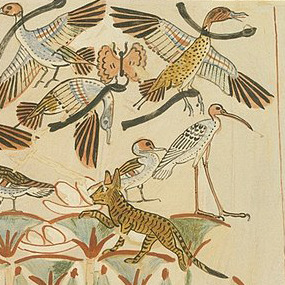
family hunting in tomb of Menna s
#ancient egypt#egyptian#painting#mouse?#mouse#cat#detail#hunting#family#14th century BC#he was official
1 note
·
View note
Photo
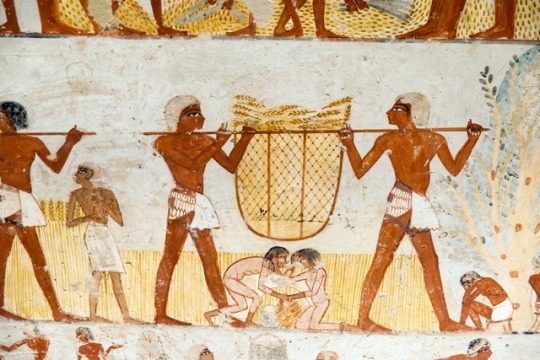
Tomb of Menna, Luxor
117 notes
·
View notes
Text
Please enjoy this virtual tour of the Tomb of Menna (TT69 nice) and don't forget to look at the ceiling!
58 notes
·
View notes
Photo
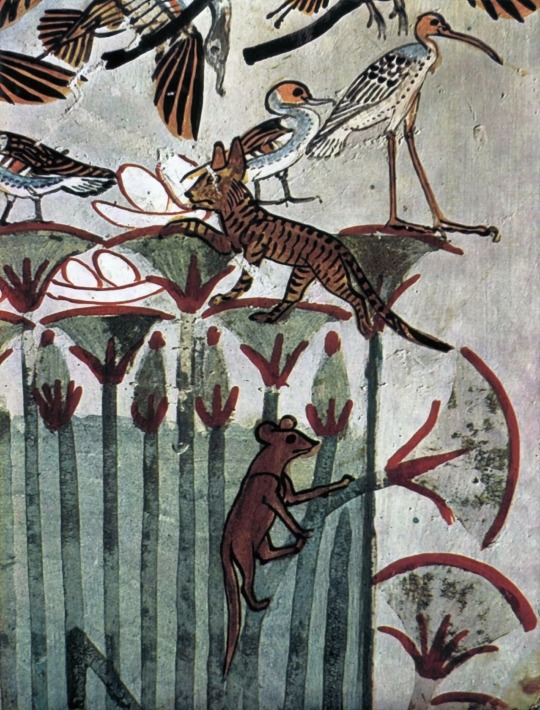
Ancient Egypt - Tomb of Menna
Hunting and Fishing, Cat and Ichneumon ,c.1422 - 1411 BC
637 notes
·
View notes
Text

Girl with flowers c. 1422–1411 BC
via the Ancient Egyptian collection
Tomb of Menna (1422–1390 BC)
wall and panel painting
#ancient egypt#ancient egyptian art#new kingdom#new kingdom style#tomb of menna#tomb of menna series#**#**a#ihione#thought you might like this!!! <3
338 notes
·
View notes
Text
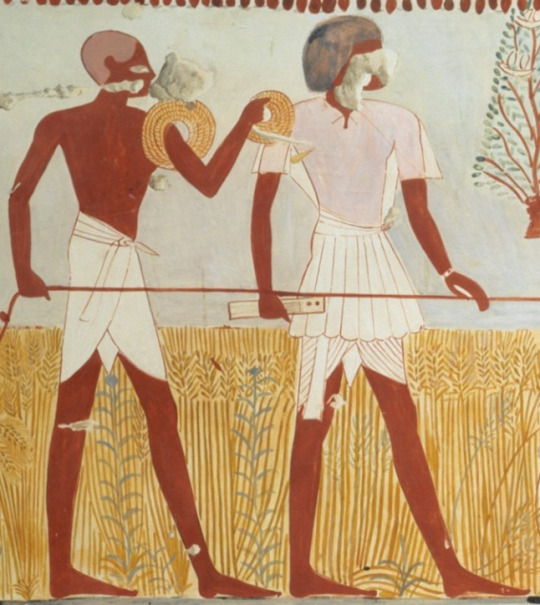






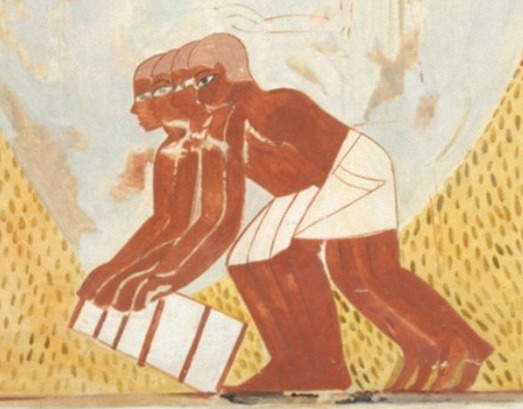



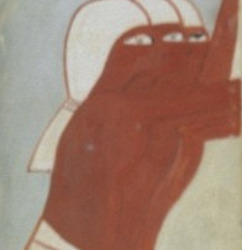
Harvest Scenes, Tomb of Menna - Met Museum Collection
Note: This is a modern copy of an original
Inventory Number: 30.4.44
Original Dating: New Kingdom, Dynasty 18, original ca. 1400–1352 B.C.
Location Information: From Egypt, Upper Egypt, Thebes
#Harvest Scenes#Tomb of Menna#new kingdom#new kingdom pr#dynasty 18#upper egypt#thebes#met museum#30.4.44#mens clothing#NKPRMC
0 notes
Text

Hunting In The Marshes, Fishing, Dynasty 18, reign of Amenhotep III, New Kingdom, Tomb of Menna, TT69.
23 notes
·
View notes
Text

Girl holding wild birds, from the tomb of Menna TT69.
Only wealthy households could afford livestock, be it cows or goats, but there was another way of getting animal protein: Fowling.
Initially it was done by throwing sticks at flying birds, and until the 5th dynasty it was mostly practiced as a sport by the elite. Later, everyone could get in on the action, just grab a stick, head out into the papyrus thickets (beware of the crocodiles), and shoot down some birdies.
New Kingdom love poems describe (Pap. Harries 500) how young women returned from fowling. The point of view in those poems are usually young men, and as such they can’t be taken as literal sources, but we also have the above depiction from the tomb of Menna TT69 (also NK) as a source.
Birds were taken home, fattened up (and their eggs eaten), and then butchered for their meat.
593 notes
·
View notes
Text
The development of the rudder
The simplest way to steer a ship is to hang an oar over the side and turn it to increase or decrease the drag on one side of the vessel. Ancient ships had a fixed stern oar.
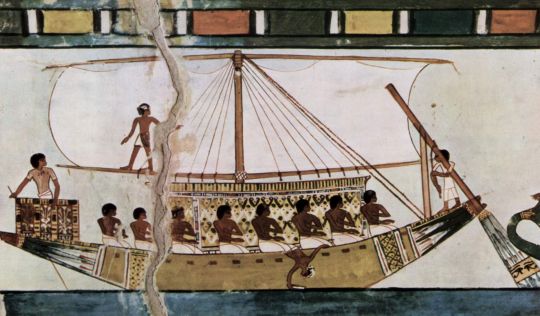
Stern-mounted steering oar of an Egyptian riverboat depicted in the Tomb of Menna (c. 1422-1411 BC)
Viking ships used a vertical steering oar, attached to the side and hanging almost vertically.
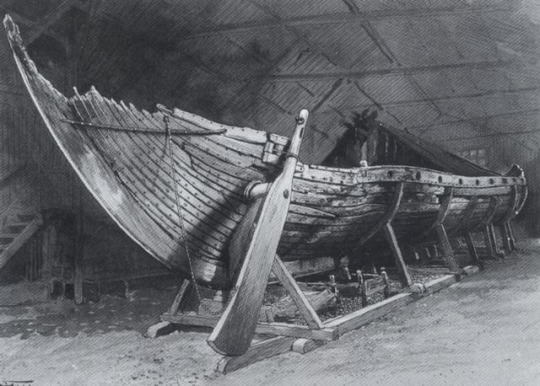
Old Viking ship starboard, by Harry Fenn ( 1845–1911)
Because the oar pivoted around its center, the forces pushing on it from each side were almost equal, making it easy to turn. From the 12th century onward, ships were increasingly built with rudders hung from hinges on the stern. Whereby the early ones were still attached very tilted and were still quite thin at the top and only became wider towards the bottom.
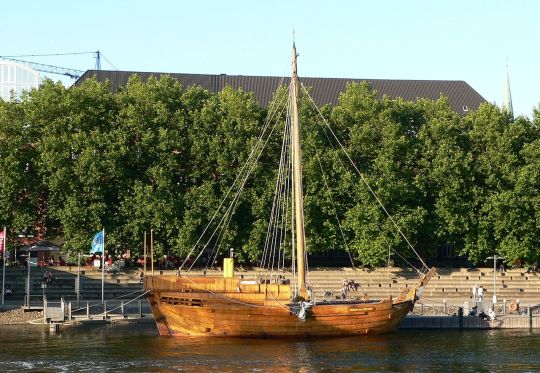
Reconstruction of the cog Roland von Bremen, with a tilt rudder
Its full potential could only to be realized after the introduction of the vertical sternpost and the full-rigged ship in the 14th century.
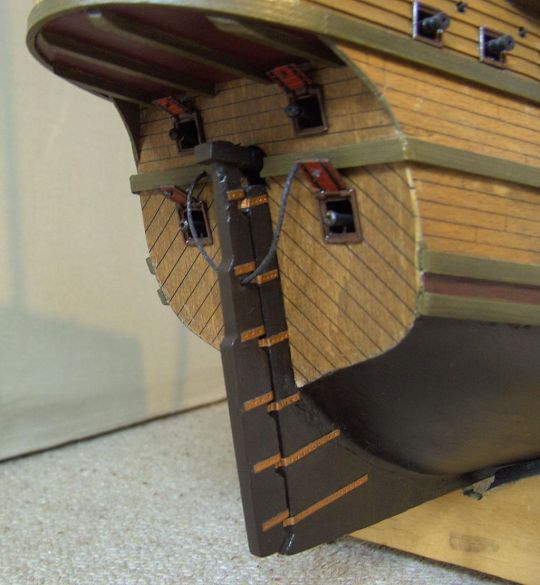
Pintle and gudgeon rudder of the Hanseatic league flagship Adler von Lübeck (1567–1581), the largest ship in the world at its time
A fixed rudder on the center line made steering simpler, but had some disadvantages. It usually pivoted along one edge, so it was no longer balanced and needed more firce to turn it. For maximum effect, the shape of the stern also had to allow water to reach the rudder, which required major changes to ship design. However, a rudder could be moved by a larger tiller, and later by mechanical devices, such as a whipstaff and steering wheel, allowing bigger ships to be built.
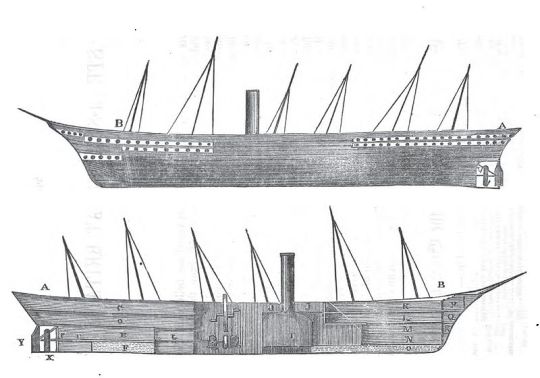
Profile (top) and longitudinal vertical section (bottom) of SS Great Britain, showing her interior layout and deck plan. Claxton, Capt. R. N. (1845): History and Description of the Steamship Great Britain
Isamgard Kingdom Brunel’s huge Great Britain of 1843 reintroduced a form of balanced rudder, pivoting around its center. This type of rudder has essentially not changed much until today and is still used today.
113 notes
·
View notes
